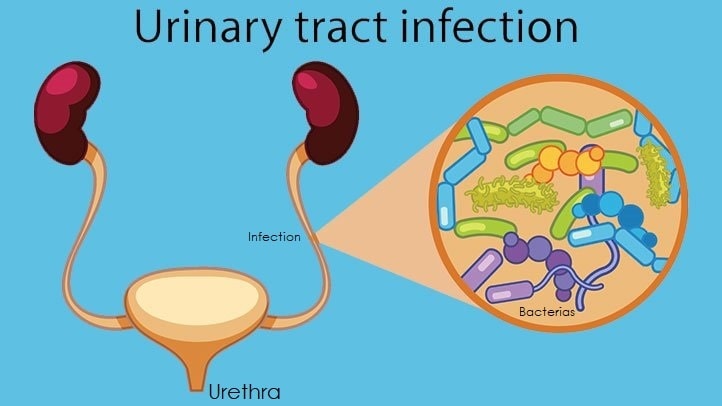A UTI is a urinary tract infection, and it is not a sexually transmitted disease. UTIs are caused by bacteria (mostly the E. coli bacteria) entering the urethra causing infection, whereas STD can be caused due to the spread of bacteria, virus or parasitic elements through sexual activity. Symptoms in some STDs and UTIs is common, which can lead to misdiagnoses and may lead to a wrong or delayed treatment. The cause of confusion between STDs and UTI are its similarities. Let’s take a look at the similarities creating confusion to recognize between UTI and an STD.
Symptoms of UTI and STDs are similar
Symptom 1: Burning during Urination is a telltale sign of Urinary tract Infection, but STDs such as Chlamydia, Gonorrhea, and Trichomoniasis also got similar symptoms.
Symptom 2: Both UTIs and STD Chlamydia can cause lower abdominal or stomach pain (pelvic pain in case of UTI)
Symptom 3: Low-grade fever too is common in few STDs and UTI
Symptom 4: UTI, as well as Chlamydia & Gonorrhea, leads to cloudy, dark or smelly urine
Based on the symptoms, it can be difficult to differentiate between these UTI and STD. A simple $24 Chlamydia test can easily reveal the correct condition.
Causes of Urinary tract infection (UTI) vs Causes of STD
a) A UTI tends to happen more in case of women, and that’s partly because of women’s anatomical structure. Refer to the diagram below

So the vulva, the outside of the vagina, has the opening to the vaginal canal and then underneath it is the opening to the urethra. If something is penetrating the vagina like penis, fingers, sex toy and it’s not necessarily clean, there are some bacteria, the bacteria actually can get pushed into the urethra. This causes infection
STDs causing UTI
As UTI and STD cause due to sexual activity they share common symptoms, but one generally doesn’t cause the other. In rare cases, Chlamydia can cause an infection of the urinary tract, and the symptoms of a UTI caused by chlamydia can differ from typical UTIs.
Biological causes of UTI in women
- shorter urethral length
- urethral meatus exposure to pathogens
- sexual activity
How to recognize or differentiate between a UTI and an STD?
In the above example, we saw the similarities between UTI and STDs which leads to confusion. But there are some peculiar signs and symptoms which can help us know if an individual is suffering from UTI or STD infection. It is also essential to get tested as a delay in the treatment of either can result in permanent damage. Here are a few common STD symptoms that are not associated with UTIs.
You have STDs (and not UTI) if you have the following symptoms along w
- Pain during sexual intercourse :
- Bleeding or spotting between menstrual cycles
- Sore throat
- High Fever
- Nausea
- Genital rashes, blisters or sores
Thus, to conclude, STD and UTI shares symptoms. There are few signs or symptoms from which you can differentiate if you have a UTI or an STD. A simple test near you can reveal the fact. Thus it is essential for a sexually active person to get tested once in 3 months.


